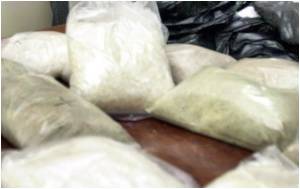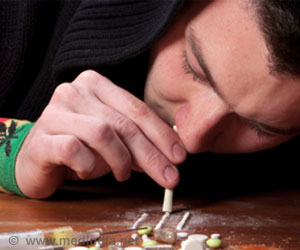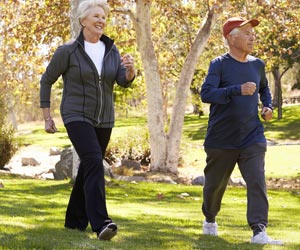Apart from the pistol, handcuffs, a Taser gun, the police sergeant Casey Stidham is also equipped with a dose of naloxone, an antidote of heroin overdose.

"We're on the front line, 24 hours a day," said Stidham as he steered his Anne Arundel County patrol car through the quiet streets of Millersville, east of Washington.
According to the Substance Abuse and Mental Health Services Administration (SAMHSA), a federal agency, the United States was home to 669,000 heroin addicts in 2012.
That's double the number in 2003, with young people making up a growing proportion of the victims.
In Maryland alone, heroin-related deaths surged 88 percent from 2011 through 2013, according to the Mid-Atlantic state's health department.
In March, a worried US Attorney General Eric Holder described a 45 percent increase in heroin deaths nationwide between 2006 and 2010 as "an urgent public health crisis."
Advertisement
Police in New York announced in late May that 20,000 officers would be equipped with doses of naloxone, an opioid antidote also known by the trade name Narcan.
Advertisement
In Anne Arundel County, naloxone -- easy to administer as a simple nasal spray -- has been part of the job for some 450 patrol officers since March.
"We were among the first 22 law enforcement agencies in the United States to equip our police officers with naloxone, or Narcan," said county police chief Kevin Davis.
Between the rolling farmland and the stately homes of Maryland's state capital Annapolis, "we noticed in the fall of 2013 that we had an inordinate amount of people overdosing on heroin," Davis told AFP.
"And a number were dying. We were helpless to really save someone's life," he added.
"We didn't want to be, as public safety officials, in a position where we had to literally stand by and watch someone die of a drug overdose when a simple antidote seemed to be available."
Stidham, who has paramedic training, explained the procedure that starts with an instant diagnosis.
"We're going to observe our victim," he told AFP. "We're going to notice that sometimes, they are clammy, their breathing has slowed, they might be on the verge of having no oxygen."
"We check for breathing at that point," he added. "If we have no breathing, that's when we're going to go to our naloxone."
One milliliter goes into one nostril, then another milliliter in the other. Within three to five minutes, as Stidham puts it, the victim returns from the land of the near-dead.
Naloxone has been credited with saving three lives in Anne Arundel County within a matter of weeks.
Equipping police with the overdose antidote is "a wonderful idea," said professor Theodore Cicero of the Washington University school of medicine in Saint Louis, Missouri.
"It acts by displacing opioids like heroin from the receptors in the brain that mediate their effects, including respiratory depression," he told AFP.
"It can revive someone very quickly. It should be available to all paramedics and first responders."
- Heroin's return -
More addicts are turning to heroin as a cheaper alternative to powerful prescription pain killers such as OxyContin that, until recently, had been rather easy to obtain and abuse.
"Access to a purer, cheaper form (of opioid) is largely fuelling this increase in the heroin epidemic," said Marc Fishman, a physician who oversees the Mountain Manor refuge for young addicts in Maryland's biggest city Baltimore.
"The purity of heroin on the streets might be 60, 70, 80 percent -- compared to three decades ago, when five percent was a big number," he told AFP.
The purer the drug, the faster the heroin rush is felt -- and the stronger the urge to take another hit.
Dustin Hinz, a 24-year-old currently undergoing treatment at Mountain Manor, said he was 18 when he first did heroin -- sending him along a path on which he would drop out of college, lose a job, then steal and lie to pay for his habit.
"I would actually shoot up before I brushed my teeth," Hinz said.
"It was like, when my eyes opened, I didn't need an alarm clock for school -- my body woke me up because it needed my 'medicine'."
There was no better feeling than "to just shoot up that heroin," he added.
"Nothing else mattered. Nothing. I could sit there in utter peace and not have a worry in the world -- until the next day when I had to do it all over again."
Source-AFP










